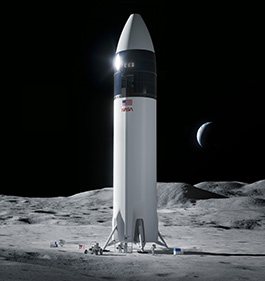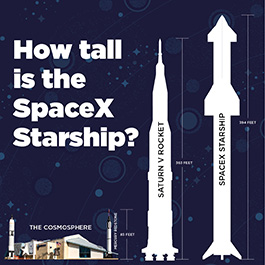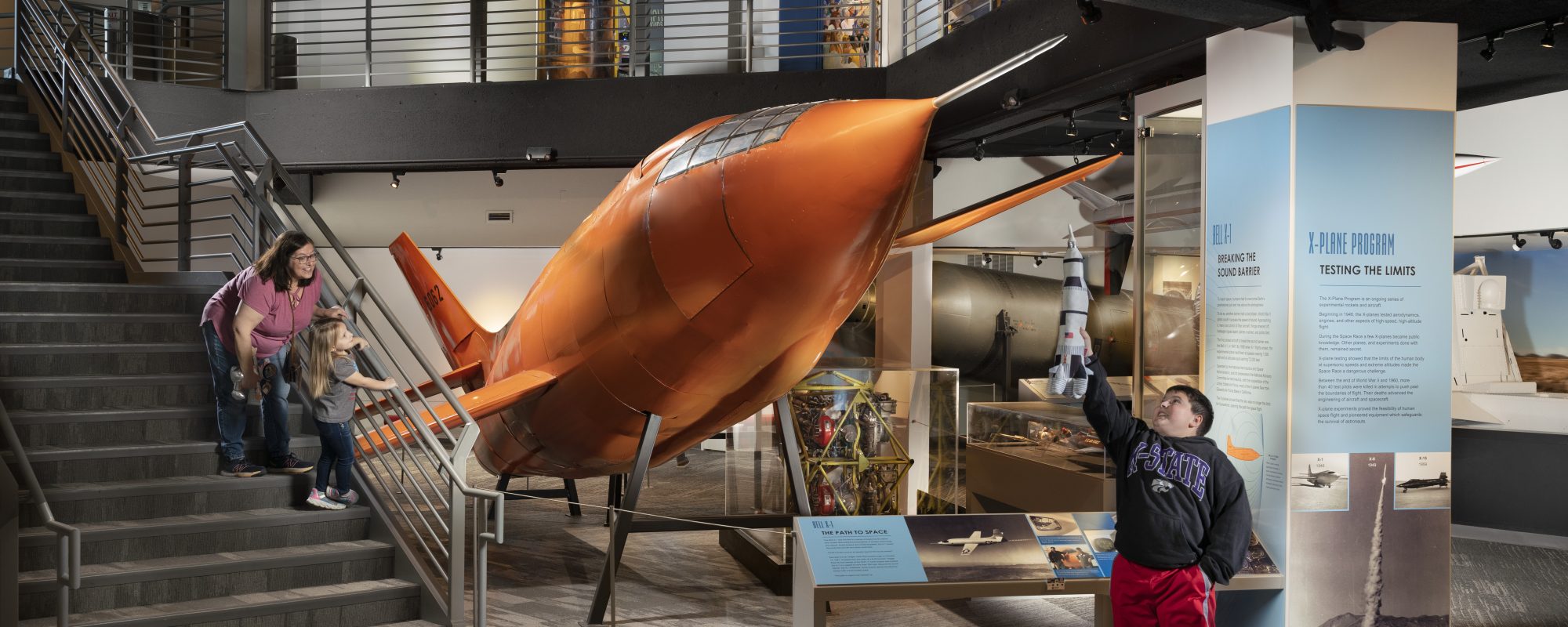Starship, the massive new fully reusable launch vehicle designed by SpaceX, just finished a fit test at the company’s Boca Chica launch site in south Texas. The picture above isn’t a computer render either. This is an actual photograph of a Starship on its orbital launch platform in Texas. Photo credit- SpaceX Twitter.
Once operational, Starship will be able to carry over 100 metric tons of cargo to Earth orbit. In addition to delivering cargo and satellites to orbit, SpaceX and NASA plan on flying a lunar lander variant in the coming years as NASA returns to the Moon with the upcoming Artemis missions. The lunar Starship is pictured here in an artist’s impression. Picture- NASA/SpaceX
To give a sense of scale to this mammoth launch vehicle, check out this comparison between Starship (on the far right) with the Saturn V and the comparatively small Mercury Redstone rocket on display here at the Cosmosphere. Do you think we’d have room in our parking lot for a Starship display?


The height of Starship only tells part of the story. Even more impressive is how powerful Starship will be once it is launching payloads to space. 29 Raptor engines will power Starship’s first stage during early flights. According to a tweet from SpaceX founder Elon Musk this past July, Starship will use 33 engines starting later this year.
33 Raptor engines on Starship will produce roughly 17,000,000 pounds of thrust at liftoff.
For comparison, the Saturn V first stage (S-IC) produced between 7.6 and 7.8 million pounds of thrust at liftoff. The Mercury Redstone rocket on display outside the Cosmosphere had just 78,000 pounds of thrust.
Some quick back of the napkin math tells us that the Saturn V produced over 97 times more thrust than a Mercury Redstone rocket. Starship will create nearly 218 times more thrust than a Mercury Redstone rocket at liftoff.
The date of the first orbital test of Starship hasn’t been announced yet, but it’s going to be one heck of a show when Starship takes its first orbital flight.


